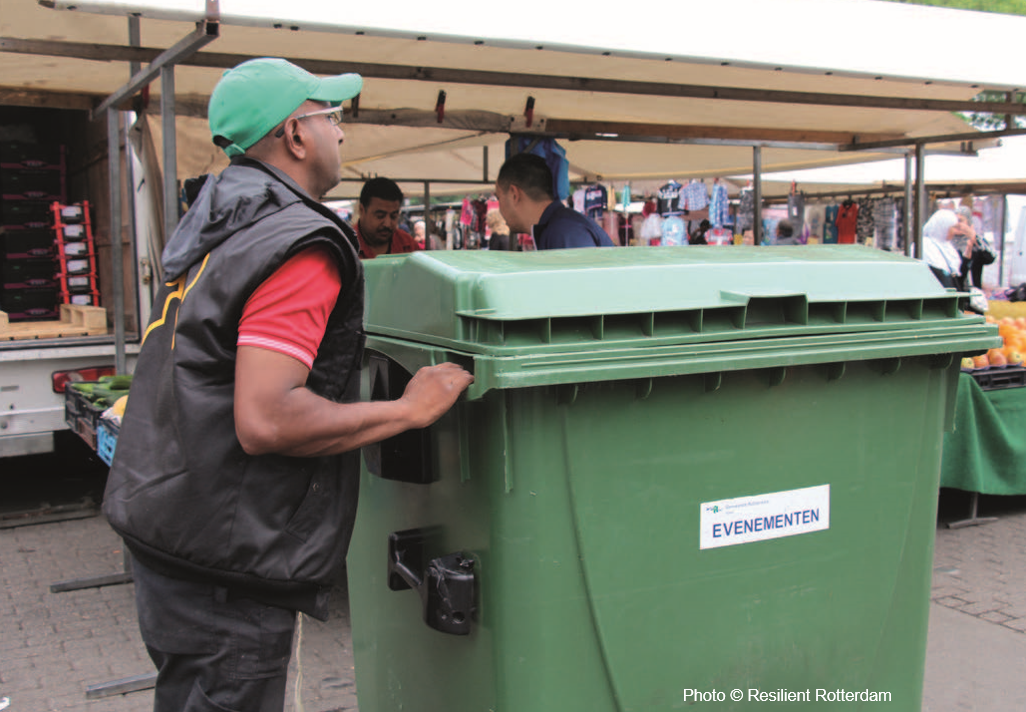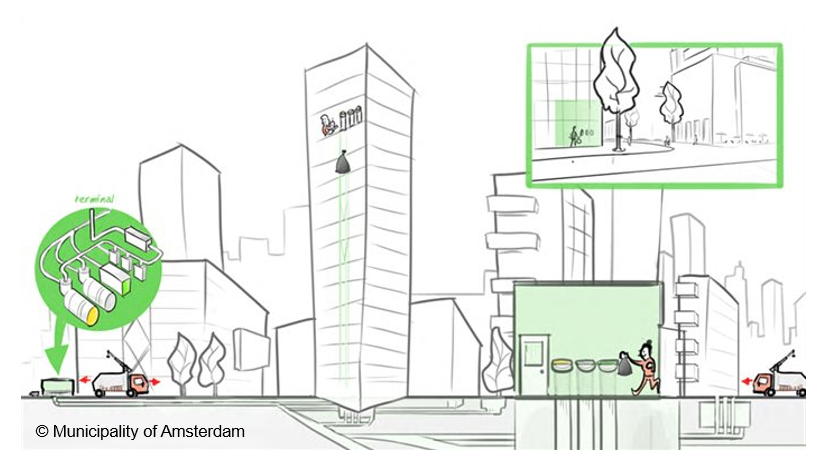4.3.5 Urban Interventions for Waste Flows
Course subject(s)
Module 4. City
The last two examples are about local waste management. Of course, we would like you to write down advantages and disadvantages again.
Example 1: Local Waste Cooperation

The “Afrikaanderwijk” is a vivid and diverse, but also a relatively poor neighbourhood in the Southern part of Rotterdam, The Netherlands. A local municipal platform connects and supports different activities that connect local inhabitants and thereby strengthens the social cohesion.
One of these initiatives is SCHOON (“clean”), a cleaning service provided by the municipality. It offers job opportunities for local citizens and provides cleaning services for – for example – housing cooperations.
Another activity of SCHOON is to collect and separate waste from the local bi-weekly market.
Example 2: Underground Waste Collection System

Sluisbuurt in Amsterdam is to become a dense urban quarter with high rise apartment blocks. Typically waste collection in such dense urban living areas is problematic. Therefore, the local council of Amsterdam decided to implement an underground waste collection system for this new quarter. Waste is collected in separate bins within each of the 5500 households and directly transported from the apartment via the underground pipe system to the waste collection company. Waste collection trucks and on street collection points are therefore not needed, saving on valuable urban public space.
With this system, waste will completely disappear from the public eye.

Circular Economy for a Sustainable Built Environment by TU Delft OpenCourseWare is licensed under a Creative Commons Attribution-NonCommercial-ShareAlike 4.0 International License.
Based on a work at https://online-learning.tudelft.nl/courses/circular-economy-for-a-sustainable-built-environment//.



